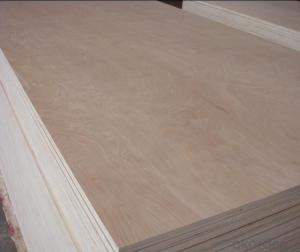Plywood, a versatile and widely used material, has been a staple in the construction and furniture-making industries for decades. It’s a fantastic option for both professionals and DIY enthusiasts alike, offering a range of benefits and applications. In this comprehensive guide, we’ll explore the different types of plywood, their unique characteristics, and how you can incorporate them into your projects. Whether you’re a seasoned woodworker or just starting out, this guide will provide you with valuable insights and tips to help you make the most of this amazing material.
The Wonders of Plywood
Plywood is made from thin layers of wood veneer, known as plies, which are glued together under heat and pressure. The grain of each layer is positioned at right angles to the adjacent layers, creating a strong and stable material. This construction method gives plywood its distinctive look and exceptional strength.
Types of Plywood
There are several types of plywood, each with its own set of properties and ideal uses. Let’s dive into the most common varieties you might come across:
Softwood Plywood
Softwood plywood is made from coniferous trees like pine, spruce, and fir. It’s a popular choice for its affordability and workability. This type of plywood is perfect for general construction work, furniture making, and even crafting.
Hardwood Plywood
Hardwood plywood is crafted from hardwoods such as oak, ash, and walnut. It’s known for its durability, strength, and beautiful grain patterns. If you’re looking for a high-quality material for furniture or decorative items, hardwood plywood is the way to go.
Marine Plywood
Marine plywood is specifically designed for use in environments where moisture resistance is crucial. It’s made with waterproof adhesives and is ideal for boat building, outdoor furniture, and any project that will be exposed to water or high humidity.
Birch Plywood
Birch plywood is prized for its smooth surface and light color. It’s often used for cabinetry, furniture, and other applications where a clean, finished look is desired. The birch veneer layers give it a consistent appearance that’s perfect for painting or staining.
Plywood Grades
Plywood is graded based on its appearance and structural integrity. The grades range from A, which is virtually free of defects, to C, which may have more visible flaws. Understanding the grading system can help you choose the right plywood for your needs.
How to Choose the Right Plywood
When selecting plywood for your project, consider the following factors:
– Application: What will you be using the plywood for? Different types are better suited for different applications.
– Durability: How long does the plywood need to last? Some types are more durable than others.
– Aesthetics: What does the finished product need to look like? Choose a plywood that complements your design.
– Budget: Plywood comes in a range of prices. Determine your budget before you start shopping.
Working with Plywood
Plywood may be tough, but it’s also surprisingly easy to work with. Here are some tips to help you get the best results:
– Cutting: Use sharp tools and a steady hand to ensure clean cuts.
– Sanding: Start with coarse-grit sandpaper and work your way to finer grits for a smooth finish.
– Finishing: Plywood can be painted, stained, or varnished. Choose a finish that suits your project and the plywood type.
– Joinery: Plywood can be joined using a variety of methods, including screws, nails, and wood glue.
Projects with Plywood
Plywood’s versatility makes it perfect for a wide range of projects. From simple shelves to complex furniture pieces, the possibilities are endless. Here are a few ideas to get you started:
– Furniture: Plywood is great for making tables, chairs, and cabinets.
– Shelving: Create custom shelves to fit any space in your home or office.
– Decorative Items: Plywood can be used to make picture frames, wall art, and more.
– Outdoor Projects: Marine plywood is perfect for outdoor furniture and structures that need to withstand the elements.
Maintenance and Care of Plywood
Proper care and maintenance can extend the life of your plywood projects. Here are some tips:
– Cleaning: Regularly clean your plywood items to remove dirt and dust.
– Moisture Protection: Seal any exposed edges and consider using a water-resistant finish.
– Repairs: Address any damage promptly to prevent further deterioration.
– Storage: Store plywood in a dry, flat location to prevent warping or damage.
The Future of Plywood
As the world becomes more environmentally conscious, the future of plywood is looking greener. Manufacturers are exploring sustainable materials and production methods to reduce the environmental impact of plywood. This includes using fast-growing trees, eco-friendly adhesives, and recycling wood waste.
Conclusion
Plywood is an incredible material that offers a world of possibilities for your projects. Whether you’re building furniture, creating art, or tackling a construction job, plywood is a reliable and practical choice. With its strength, durability, and versatility, plywood is here to stay. So, the next time you’re planning a project, consider the wonders of plywood and all it has to offer.

